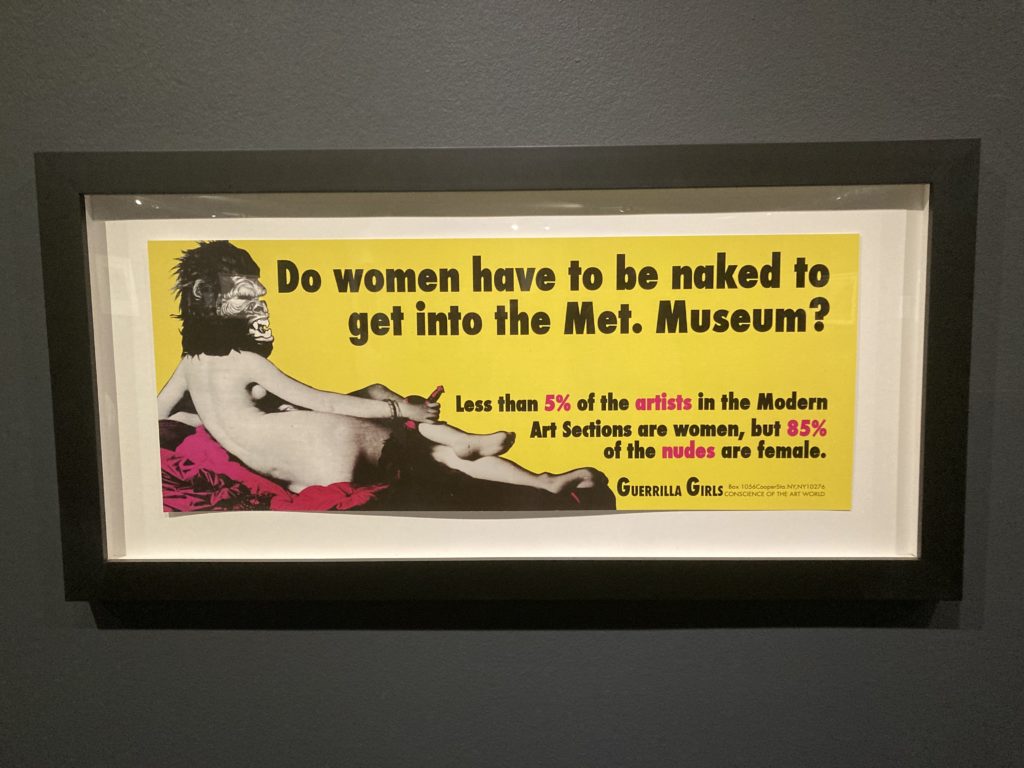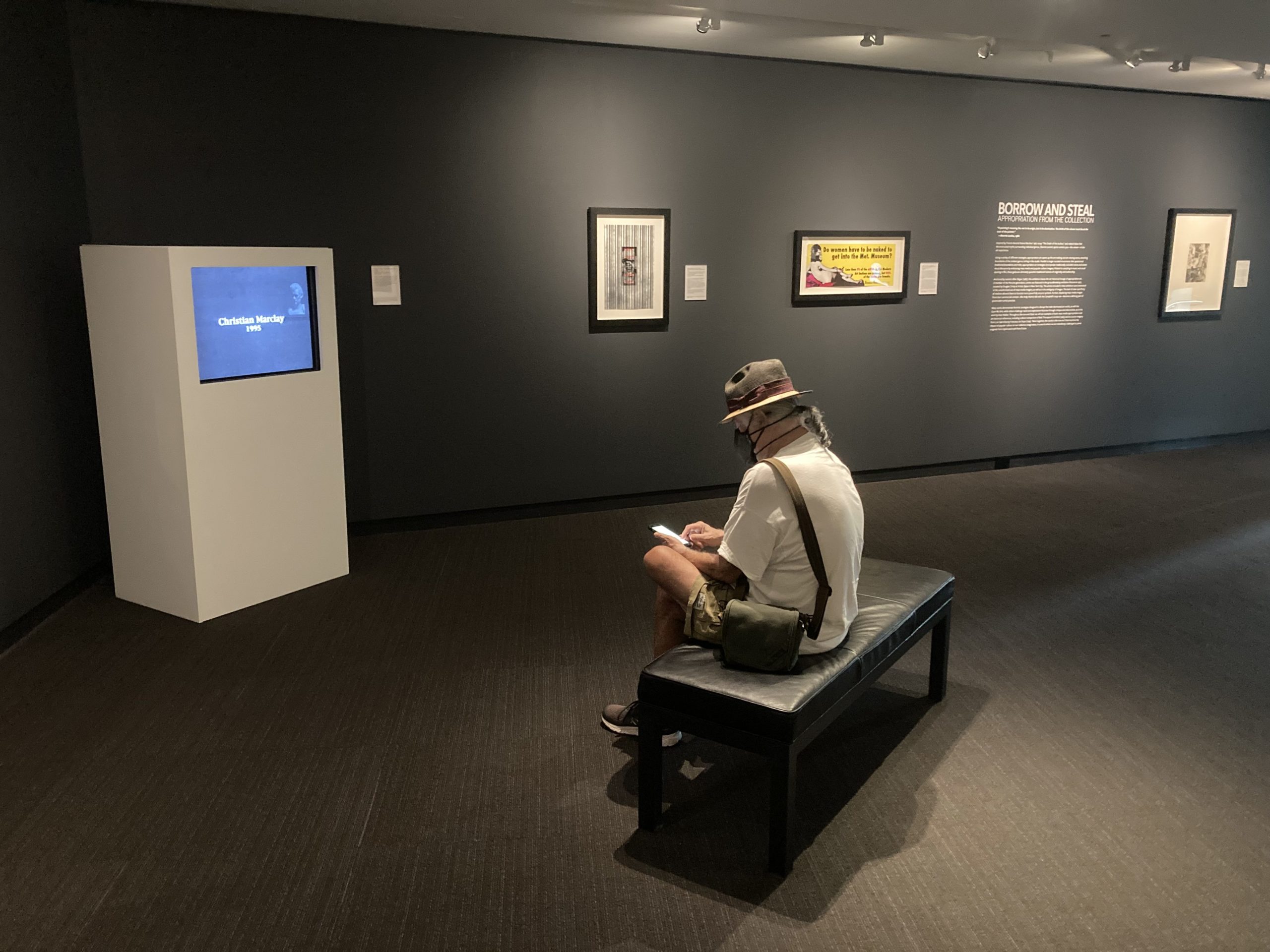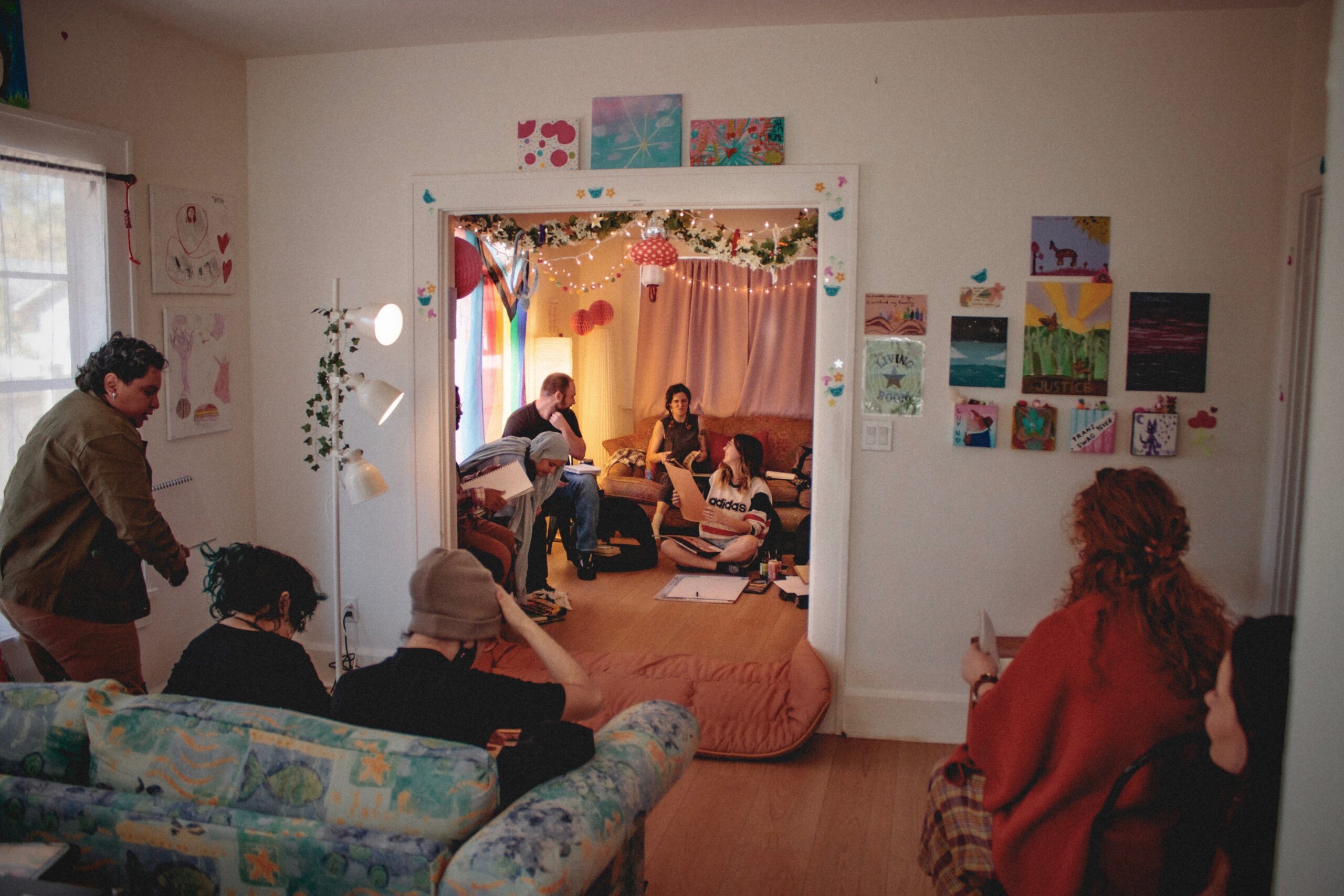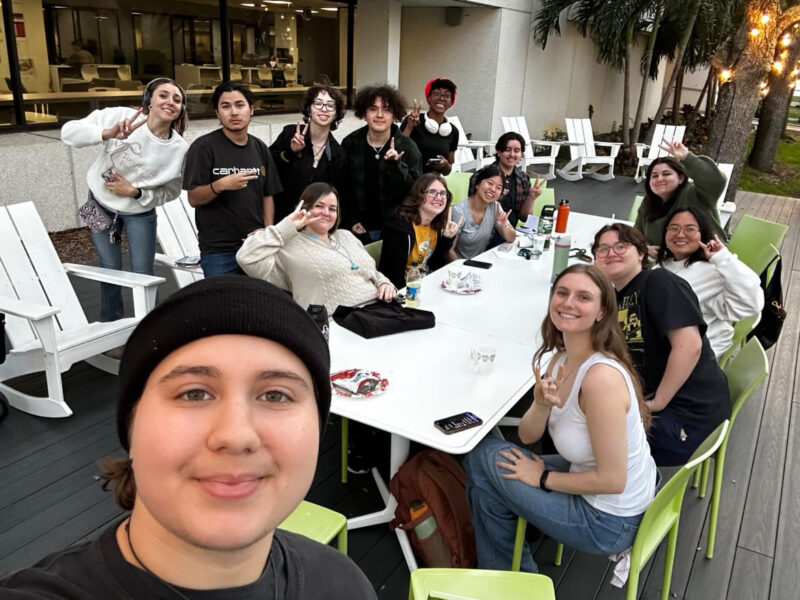Courtesy of Lily Cannon | The Crow’s Nest
By Lily Cannon
Is originality dead? Did it ever exist in the first place? The newest collection at St. Petersburg’s Museum of Fine Arts, “Borrow and Steal,” asks us these questions, all while infusing classic images with a fun pop-culture twist.
Visit the second floor and your eye will be awash with graffitied propaganda posters and cartoon alien spaceships stuck next to Egyptian sphinxes. Even the most austere museum-goer will sit and watch the TV that loops a montage of film characters arguing with each other over the phone.
On top of all the glitter and color, however, “Borrow and Steal” examines the consumerist lens that has shaped fine art for centuries.
This collection takes the viewer back to the origins of art appropriation in the 1970s, when counterculture artists repurposed mainstream images to comment on the political and social events of their time.

One of the pioneers of this aptly-named “Pictures Generation” is Sherrie Levine, who criticizes the commodification of art as “a magical source of wealth and value.” The influence of her 1987 “After Degas” collection permeates the exhibition’s references to classic painting and sculpture.
“Borrow and Steal” maintains the political edge of its predecessors and shines a spotlight on a diverse cast of creators, from Roger Shimomura to the Guerilla Girls.
Their works contain themes of institutionalized sexism and racism, revealing the discriminatory barriers of the art world. The result is an open dialogue with the viewer.
In his woodblock “American Neighbors,” Shimomura reflects on his experiences as a child in an American internment camp during World War II, challenging what America considers to be the “typical” citizen. Sticking Andy Warhol’s portrait of Elizabeth Taylor next to a Geisha in modern suburbia, the artist defines his identity as a Japanese-American on his own terms.
At first glance, Ellen Gallagher’s extraterrestrial collage is a humorous pastiche of its historical subject matter. Using both old and new elements, Gallagher crafts a mythology centered around Black identity, playing with both time and genre.
The piece, “Abu Simbel,” combines print of the temple of Ramesses II together with clips from the 1972 Afrofuturist film “Space is the Place,” resulting in what Gallagher describes as the “multi-directional flow through space and time.”
Any exploration of the appropriation of art wouldn’t be complete without the Guerilla Girls, a feminist community that works anonymously to speak out against the patriarchal standards of Western art. True to their name, they platform their cause via impromptu methods such as street art and pop-up exhibits.

“Borrow and Steal” displays one of their most well-known creations, a poster that replaces the head of Jean-Auguste-Dominique Ingres’s “Le Grande Odalisque” with that of a gorilla, captioned “Do women have to be naked to get into the Met. Museum?”
Their bold methods embody the principles of modern art appropriation –– simultaneously venerating and critiquing the pillars of fine art.
“Borrow and Steal” will be on display until Feb. 5, 2023.




Who made the first piece, and what is the title?